#BBCtrending: Military tactics in US 'war zone'
- Published
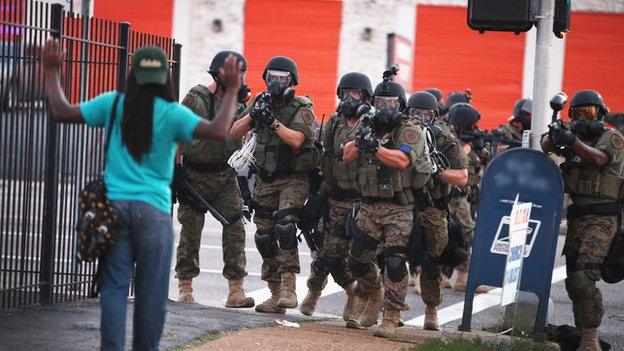
After the shooting of an unarmed black teenager by police in the US state of Missouri, and the violence that followed, questions have arisen about the police reaction.
The shooting of 18-year-old Michael Brown sparked often violent protests, looting and rioting across Ferguson, Missouri, over the past three days. Some commentators have now dubbed the suburb "Fergustan, external" on social media, suggesting the area now resembles a "war zone, external".
President Barack Obama said on Thursday that there was "no excuse for excessive force" by police, while also condemning violence against officers.
Eyewitnesses say Mr Brown raised his arms in an attempt to surrender before he was shot by an officer, but police say there was a struggle.
As local and county police have taken to the streets to contain the unrest, many have questioned whether their show of force has been too excessive.
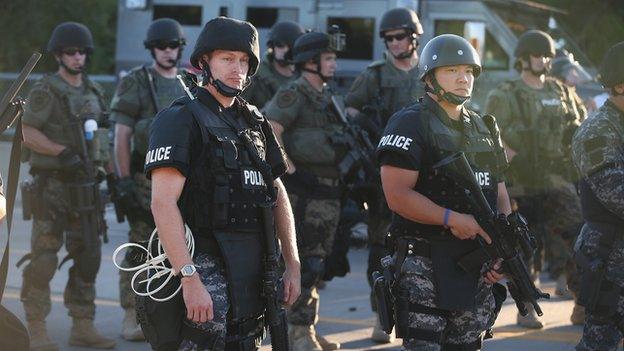
In one photo, police officers are responding to the protests in armoured vehicles, initially developed to withstand improvised explosive devices.
Other photos show police wearing army green shirts and camouflage pants, similar to the uniforms of US marines, and carrying guns, external based on the military-used M4 carbine.
Videos reveals smoke clouds of what appears to be tear gas, inundating empty streets that were at one point filled with protesters, external.
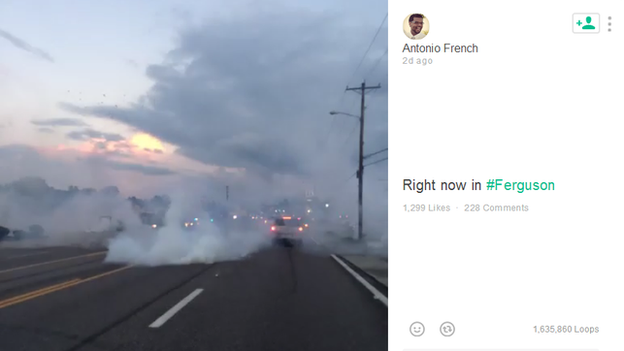
St. Louis Alderman Antonio French has been documenting the protests in Ferguson on the social media platform, Vine.
Images like these have led many commentators to question how the small suburb of Ferguson could have turned into a "war zone" overnight.
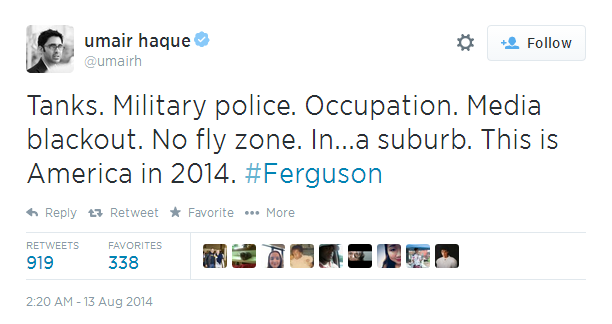
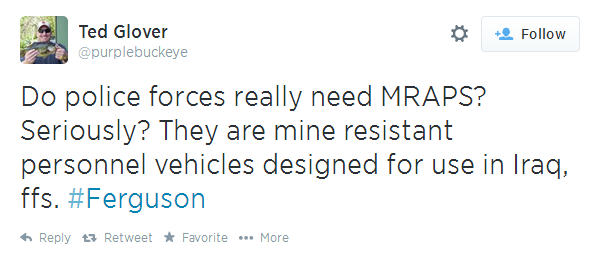
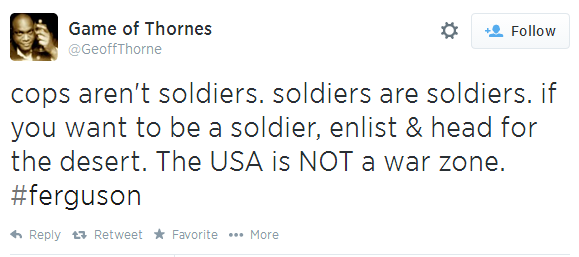
Twitter users react to photographs and citizen media of police in Ferguson, Missouri.
"Some of the images we're seeing are indiscriminate shows of force - the stopping of people and the pointing guns at people," says Radley Balko, who has written two books on the militarisation of US police.
"This is slowly becoming a default reaction in emergency situations - the only way to stop a situation is an overwhelming force and turning large sections of cities into martial law zones."
Much of the military gear that police departments use is distributed by the Department of Defence at a small cost to police, says Balko. Local police departments only have to pay for the gear's transportation and upkeep.
Author Radley Balko explains why America's police forces often look and act like another branch of the military.
The police in Ferguson have defended firing tear gas and rubber bullets, saying the crowds refused to disperse and some of the protesters were throwing rocks and firing guns.
At a press conference on Thursday police chief Thomas Jackson said the tactical units would be back on the streets tonight. "It's a powder keg. We all recognise that."
Norm Stamper, the police chief who led the much-criticised police response to the 1999 WTO protests in Seattle, believes there are times when the police need to militarise.
"For active shooter cases, hostage situations, and school shootings and so forth, you had better be ready to respond to all of that. It's irresponsible not to," he says.
But he does not think the disturbances in Ferguson justify it, because this type of force should be used in moderation and with the community in mind.
"That means [having an] open and honest forthright conversation that requires police to recognise their role as peacekeepers and peacemakers, rather than escalating their show of force."
Reporting by Annie P Waldman, external
You can follow BBC Trending on Twitter @BBCtrending, external
All our stories are at bbc.com/trending